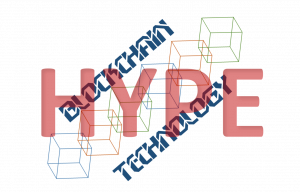Even though we remain embroiled in the novel coronavirus pandemic, many pundits now feel confident an end is in sight and they are looking to the post-pandemic future. Cathy Morrow Roberson (@cmroberson06), founder and President of Logistics Trends & Insights LLC, understands, as the economy struggles to pull its way out of the economic sinkhole created by the pandemic, there will be tough slogging ahead. She believes, however, that companies that have invested in cutting-edge technologies will be the first to gain a firm footing in the new business environment. She writes, “As the world spirals into a global recession, those companies that have embraced innovative technologies will be those that will lead during and after the economic downturn. Furthermore, much like recessions of at least the past forty years, emergence from such downturns will lead to a technology renaissance.”[1] One of the technologies she predicts will be indispensable during the recovery is blockchain (aka digital ledger) technology. Why? Because blockchain technology can lead to improved supply chain visibility.
Blockchain’s potential for improving supply chain visibility
Peter Navarro (@PeterNa13475807), an Employer Branding Specialist at Sixt, writes, “The reality is that blockchain has countless possible uses that have direct and concrete applications in a large number of industries, both in the public and private spheres.”[2] As Roberson pointed out, one especially promising application for blockchain technology is improving supply chain visibility. She writes, “Visibility has been an often-discussed topic and a number of technologies have pecked at it but never fully succeeded in solving the entire problem. … So, perhaps it is time to consider blockchain for solving one’s visibility needs. … Visibility enhancements will be among the leading technology investments that companies will make with blockchain being given a closer look to improve this capability.”
Rebecca Liao (@beccaliao), Co-Founder and Executive Vice-President at SKUChain, and Ziyang Fan (@ZiyangFan), Head of Digital Trade at World Economic Forum, agree with Roberson that the pandemic has highlighted the need for better visibility. They explain, “In the wake of supply chain disruptions due to coronavirus, several experts have reiterated the need to obtain more visibility across the chain. … Obtaining this visibility is considered key to optimizing supply chain efficiency and agility during normal production. When critical supply chain disruptions hit, this visibility becomes crucial to understanding the impact of the disruption on the rest of the chain so that others in the ecosystem can plan and take action, such as developing routes to alternative suppliers.”[3] And, like Roberson, they believe the need for better visibility will inevitably lead to the adoption of blockchain technologies. They explain, “When the data in [supply chain] communications needs to be distributed to more parties, traditional supply chain systems, which are centralized, cannot grant independent and auditable access controls to each individual party.” What is required, they write, is “a decentralized system” that gives “suppliers the privacy they need and buyers the visibility they want. A blockchain with either private or public permissions meets this criteria.”
Technology correspondent Vishnu Rajamanickam (@vishnucr92) agrees that blockchain deserves a closer look in the area of supply chain visibility. He explains, “Even as technology percolates within supply chains, logistics operations continue to be fraught with visibility issues. This problem stems from logistics stakeholders struggling to trust their partners both upstream and downstream in the value chain, jeopardizing data interconnectivity and the resulting efficiency gain. Blockchain as a technology can be a powerful tool to infuse trust into a value chain, especially in situations that require transactions to be made based on data arising from different stakeholders in the network.”[4]
How blockchain technology works
If you are unfamiliar with how blockchain technology works, or simply confused by technology, you are not alone. Industry analyst Adrian Gonzalez (@talkinlogistics) writes, “Over the past couple of years, no other technology has generated so much hype, and so much confusion, as blockchain.”[5] Sean Galea-Pace (@JournoSeanGP) offers this simple explanation: “Blockchain is essentially, as the name suggests, a chain of blocks. However, instead of a physical chain, there’s digital information (the block) stored in a public database (the chain). When a block stores new data, it is added to the blockchain.”[6] He goes on to explain four things must happen for the chain to remain intact. They are: 1) A transaction must occur; 2) The transaction must be verified; 3) The transaction must be stored in a block; and, 4) That block must be given a hash (i.e., added to the chain).
In order for the system to work, everyone in the chain must use identical protocols. For some organizations with multiple supply chains, this can be problematic. Today there are several competing blockchain systems which means standardization is a big hurdle for many companies. Rajamanickam reports one way around the standardization problem is to utilize an aggregator. He explains how Data Gumbo is providing this service in the trucking industry. He writes, “To enable such transactions through the blockchain network, it is crucial for data that enters the system to be standardized across the value chain. Since it is not feasible to ask every stakeholder in the trucking supply chain to be compliant with data standards, Data Gumbo looks to bridge the gap by acting as a standardized aggregator.” Standardization is not the only issue; there are also issues with scalability and transaction speeds. Fortunately, most supply chain blockchains are private ledgers which makes those issues manageable.
Concluding thoughts
“As any supply chain professional will attest,” writes Richard Ma, CEO of Quantstamp, “it is an industry challenged with massive amounts of data and enormous complexity. Information is often siloed, hard to access, inconsistently formatted or difficult to analyze. Thinking about driving change in an industry like this could be overwhelming, but the silver lining is that even the most basic applications of blockchain technology could significantly increase productivity and profitability. … And as new use cases are discovered, organizations are realizing blockchain’s untapped potential to tackle long-standing issues around efficiency, information sharing and traceability.”[7] Most analysts agree supply chain applications of blockchain remain in a nascent stage; however, the potential upside of this technology may, in fact, lead to the technology renaissance Roberson discussed at the beginning of this article.
Footnotes
[1] Cathy Morrow Roberson, “Will Blockchain Lead the Next Technology Renaissance?” Logistics Trends and Insights Blog, 19 April 2020.
[2] Peter Navarro, “The Impact of Blockchain Technology on Various Industries Expected in This Decade,” Datafloq, 20 April 2020.
[3] Rebecca Liao and Ziyang Fan, “Supply chains have been upended. Here’s how to make them more resilient,” World Economic Forum, 6 April 2020.
[4] Vishnu Rajamanickam, “Blockchain’s compelling case in bringing trust, visibility into supply chain transactions,” FreightWaves, 28 October 2020.
[5] Adrian Gonzalez, “Blockchain In Supply Chain Management,” Talking Logistics, 2 December 2019.
[6] Sean Galea-Pace, “What is blockchain’s role in supply chain?” Supply Chain Digital, 7 May 2020.
[7] Richard Ma, “How Blockchain Tech Is Solving Problems In The Supply Chain Sector,” Forbes, 2 January 2020.





